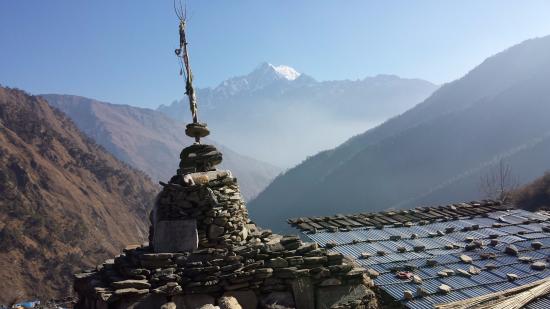On a distance, I catch up with four children, carrying loads of dry twigs and green leaves for firewood and cattle feeding. We talk about life in the village, and at a distance, it appears. Apparently, it looks like Lego’s building bricks – each systematically concocted as in an orchestra. My imagination is stirred by a herd of cows and mountain goats. I excuse myself from their way. We shared the same path.
Read Previous Blogs:
Gatlang – A traveler’s epitome
Gatlang– part II
Imagine the remoteness of Gatlang when I, with typical newar-looking face from Kathmandu, am mistaken as a westerner. No surprise, Nepali is a second language here after Tamang. The view of Langtang II (6561m) is impressive at sundown. Views captured, and set to shelter. The first feeling I get – in Gatlang, life seems to be suspended in time; and time, with all its might, defies changes of ‘so-called-modernity’. Here, life unfolds at its own pace regardless of what minor events and petty changes occur in the world outside. I question, how long the threads of isolation for? If I am to paint this hamlet in few tangible semantic colors, I would come as close as the Shire from The Lord of the Rings.
I stray around the village for a while. People have a curious but twitchy look on their faces. Outlanders! But that anxiety soon fades and blends with warm reception. Children are driven with gaiety and glee, and ‘Namaste’ is the first notch of words I hear. They guide me to Community Lodge – a lodge run by the community. There is also a home-stay and a private lodge. The differences are minimal to non-existence. After all, it’s a close community with 300 households of homogenous folks, flanked by their isolation and self-sufficiency.
There is a secondary school that marked its 10th grade this year, a community health operated under demand, and a small outlet for grocery at the centre of the village. Any other facility would be superfluous. I am forced to think and rethink our needs and wants as human beings. What we have in the cities is a need; at least we like to think. Here, in absence of all those billboards and gadgets, life is still convincingly beaming and content. And satisfaction and joy are precisely what we are fighting for all our lives in our modern cities. Should we not redefine our needs and wants?
Read Next Blogs:


Comments